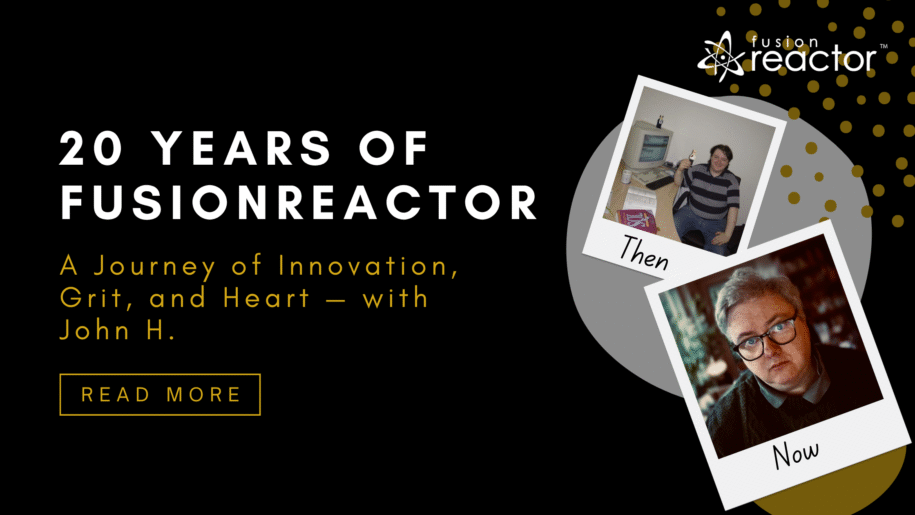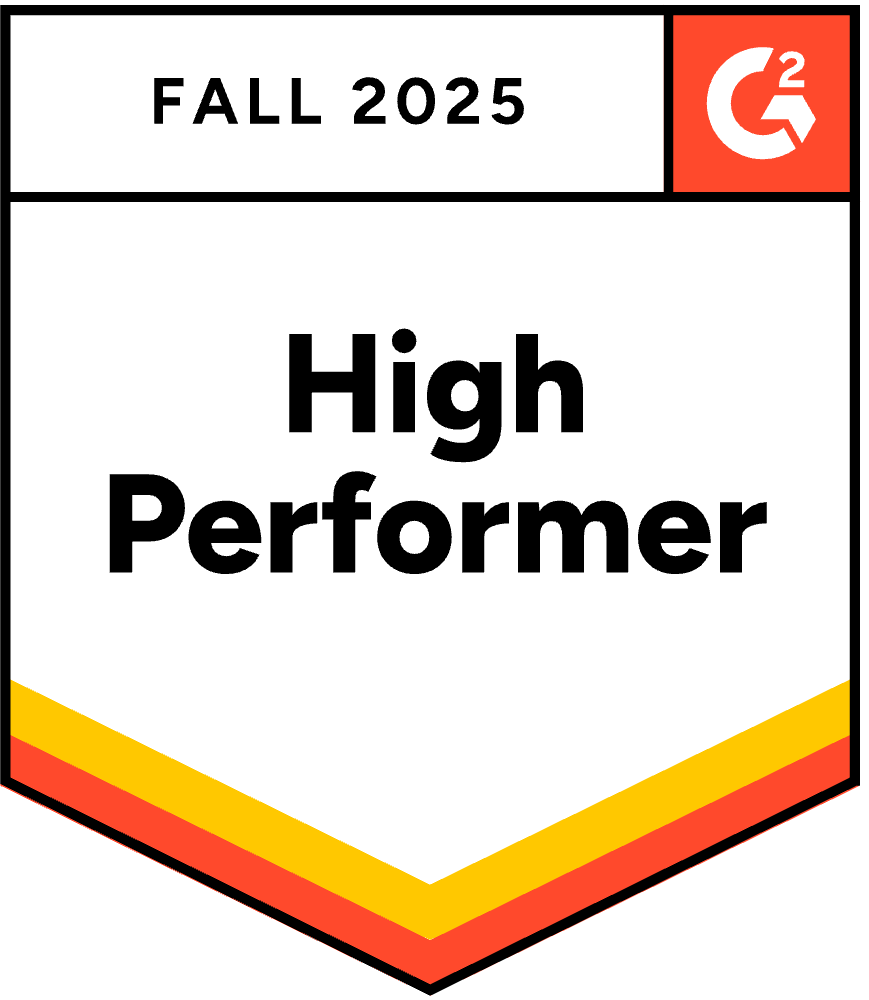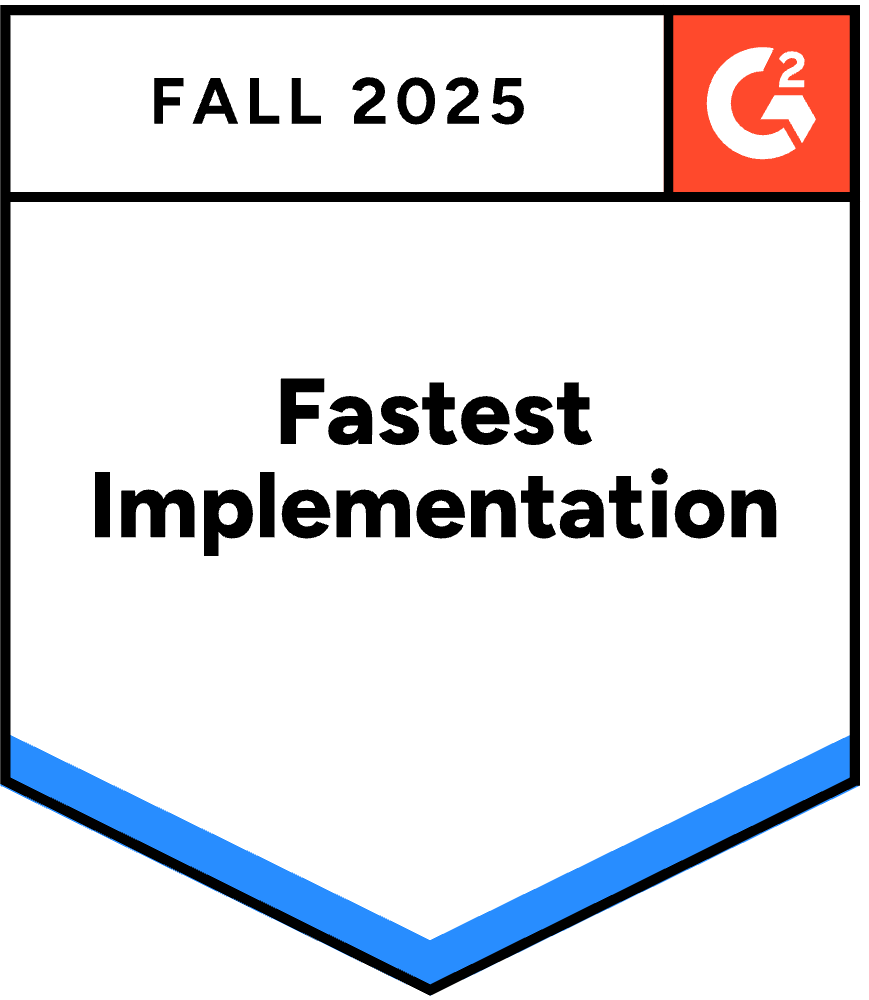This December, FusionReactor celebrates an incredible milestone — 20 years of innovation, teamwork, and evolution. To mark the occasion, we’re sitting down with some of the people who’ve shaped our story from the very beginning.
Today, we’re taking a trip down memory lane with John H— one of FusionReactor’s longest-serving team members, and a true cornerstone of our history and culture. From the early Tornado project to AI-driven innovation, John’s story embodies what FusionReactor is all about: curiosity, resilience, and perseverance.
“I joined Intergral on June 1st, 1999,” John recalls, marking the start of a journey that predates FusionReactor itself.
Back then, the company was small but full of ambition. His first role? A Java and ColdFusion programmer working on the Tornado document management system. Among his proudest early achievements were the Vortex Visibility Engine and XML Navigator control — powerful tools that paved the way for what would come next.
“It was one of the first things I worked on; Darren and I sat in a room for two weeks, fueled by pizza and cups of tea, and hammered out the code. It was groundbreaking. Our nearest competitors had nothing like it.”

Wearing Every Hat in the Startup Years
Like any good startup story, early life at Intergral meant doing a bit of everything.
Beyond coding, John ran servers, managed email and DNS, maintained the phone system, handled databases, and even represented the company at trade shows.
“As a small startup, you tend to have to do everything you’re able to do,” he laughs. “From ordering hardware to setting up our first VPN, to upgrading our internet from ISDN to DSL — and much later to fiber — I’ve done it all.”
This hands-on, can-do spirit became part of the company’s DNA. And as FusionReactor emerged — initially as a tool to troubleshoot Tornado — it quickly became the heart of Intergral’s business.

Building FusionReactor, FusionDebug, and Beyond
Over the years, John has helped design and build some of FusionReactor’s most defining technologies.
“I worked on FusionReactor for many versions and originated several features that none of our competitors had at the time.”
Next came FusionAnalytics — “a bit like Grafana,” he explains, “but with a far more innovative interface — years ahead of its time.”
Then came FusionDebug, which John calls “one of the hardest things I’ve ever worked on — requiring knowledge in so many different areas.”
He also led the OSGi conversion, a monumental effort to modularize FusionReactor’s growing codebase. And more recently, he’s been instrumental in embedding Grafana into FusionReactor Cloud, maintaining the user and dashboard provisioning system, and developing the Katie AI system for Kubernetes.
If you’ve used FusionReactor Cloud’s real-time query capabilities, you’ve seen John’s work in action.
“I wrote the specification and implemented the agent-side communication protocol that lets Cloud ask: ‘What web requests are running right now?’ — and get an instant answer. Nobody else had anything like it.”

Adapting to Change: From Data Centers to the Cloud
When asked about the biggest change he’s witnessed, John’s answer is both technical and deeply personal.
“COVID really hit us hard. We were already in the process of moving most of our infrastructure to the cloud. By the time the virus hit, we were almost done — but I still remember decommissioning our little data center in Böblingen. It had served us so well for so many years.”
Unplugging those final Ethernet cables and destroying the last hard disks felt like the end of an era.
“It was sad to see it go,” John admits, “but it also marked the start of a new one. We became a remote company — and I think we do that pretty well.”
He’s also seen firsthand how AI has revolutionized software engineering:
“We’ve gone from hand-writing code to having it written for us. That frees us to think about how the code should work — to focus on solving real problems. We can see the forest, not just the trees.”

Moments of Pride
When it comes to milestones, John has a few that stand out — both technical and emotional.
- The Vortex Engine — an early triumph that changed how document access was handled.
- FusionDebug 1.0 — a monumental engineering challenge and a proud achievement.
- OSGi Conversion — a massive refactor that made development cleaner and faster.
- FusionReactor Cloud’s GCS system — a behind-the-scenes marvel that still drives the product today.
Each represents countless late nights, creative breakthroughs, and “you get to play again” moments — referencing Tracey Kidder’s The Soul of a New Machine, one of John’s favorite books.
“That phrase — you play again — really captures our culture. You achieve something huge, and then you start over, chasing the next challenge.”

Favorite Memories and the Heart of the Team
Ask about his favorite memories, and the nostalgia shines through:
“Getting Tornado version 1 finished was huge. But honestly, all the early releases — those were special. And the team outings — Malaga in 2024 was fantastic! I have fond memories of dinners at the old Mexican restaurant in Stuttgart, lunches at Slow Italian in Böblingen, Dream Bowl and burgers, and summer picnics at the IBM Club.”
He smiles:
“Going flying with Darren in the afternoons — all fantastic. The things you lose, being fully remote, eh?”
If FusionReactor were a person?
“Complicated, but with a heart of gold.”

Looking Back — and Ahead
As FusionReactor turns 20, John reflects on two decades of change, challenge, and camaraderie.
If he could send a message to his 2005 self?
“Invest in AI!” he laughs.
But there’s something deeper behind the humor — a quiet pride in having been part of something that’s stood the test of time.
“We never gave up. With persistence, determination, and grit, we solved problems that once seemed impossible.”
Final Thoughts
Like the John Denver song “Calypso” that John says best sums up his journey —
To sail on a dream, on a crystal clear ocean, to ride on the crest of a wild raging storm…
That’s FusionReactor’s story in a nutshell — 20 years of adventure, innovation, and teamwork, navigating every storm with courage and creativity.
Here’s to the next 20 years — and to the people who make it all possible. 🌟










